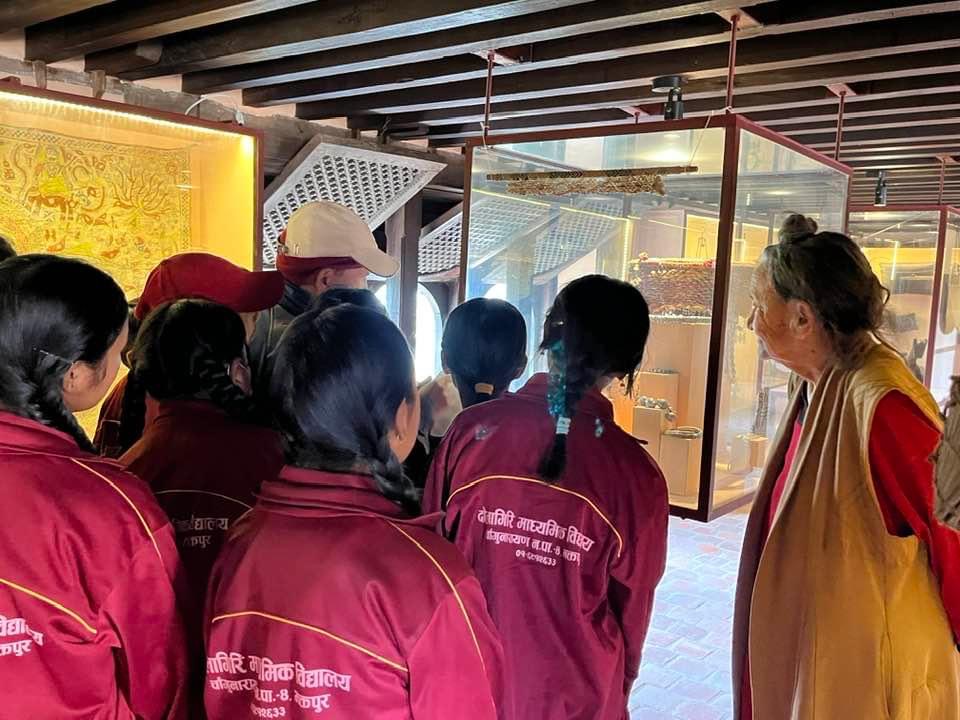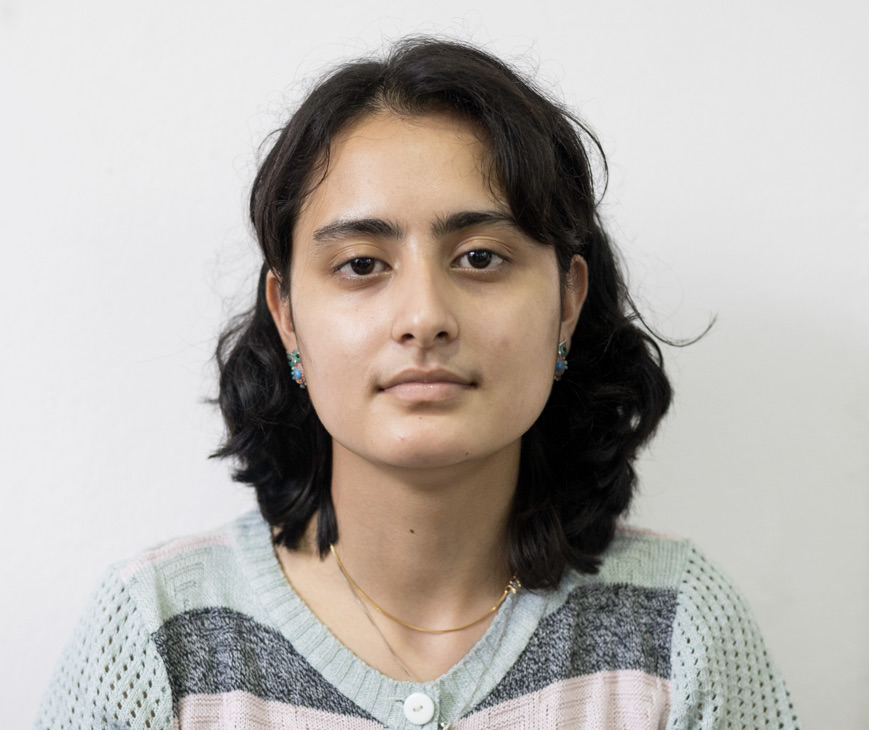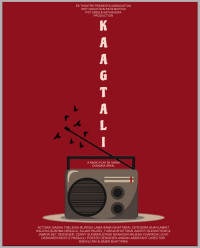Culture & Lifestyle
A sense of history in the mundane
Changu Narayan’s Living Traditions Museum showcases primaeval everyday items used by Nepalis—living up in the Himalayas and hills to down in the Tarai plains.
Urza Acharya
Changu Narayan is an entity of its own. And it’s not just the temple, but the entire space—from the neatly curated shops and the stone paved steps to the welcoming khaja ghars—feels like a medieval town that has finally found its footing in modernity. The people there smile and gently urge you to visit their shops. Changu Narayan seems like a pleasant, self-reliant community. Once you climb up the stairs and finally reach the arched gates of the temple, you will notice that it is in transition. The temple is temporarily veiled underneath the web of bamboo piled on top of each other. Workers sit atop the bamboo-made platforms giving the temple a new vibrancy—they carry small buckets of green, blue, and orange paint, giving the temple a new facade.
The left of the temple houses a sattal. Unlike its colourful counterpart, the sattal has retained its original colour. Still, the richness of the wood shines through. The sattal is home to the ‘Living Tradition Museum’ at Changu Narayan—a gallery focused solely on documenting and depicting everyday and ceremonial materials Nepalis use.
According to the museum’s website, the sattal is called the Amatya sattal, which was originally a rest house established by an Amatya family of Patan for the rituals and feasts for rights of passage and yearly occasions. In 2010, the sattal was transformed into a museum with support from the Department of Archaeology and the Guthi Sansthan.
Like many heritage sites across the Valley, the museum was severely destroyed by the 2015 earthquake. After eight years, the museum has finally re-opened to the public under the leadership of Govind Nepali, who has a PhD in Culture and Rural Development from Tribhuwan University. “The earthquake damaged the historic pilgrimage building in which Living Traditions Museum was housed,” Judith Chase, founding director of the museum, explained. “But it couldn’t dent our enthusiasm to return the Museum to its full glory again.”
Living Traditions Museum is spread over a two-story space. The lower space has the ticket counter, through which you enter a sitting area. As you move past the chairs, you are greeted by the main door into the building. The room on the first floor isn’t that spacious, but it has a sizeable antique sanduk (a type of traditional storage trunk).
As you climb up the traditionally built wooden stairs, the museum comes to life. Everyday and ceremonial objects from the past are meticulously placed all around. The terracotta tiles on the floor give the space a natural effect, helping you focus on what’s hung and placed around the space. The upper floor is jewelled with iconic open-lattice carved windows through which one can get a full view of the temple.
The exhibition features ceremonial and everyday artefacts from all over Nepal. Divided into four sections, the gallery uses photographs and thoroughly explained labels to add context to the items displayed. The first section showcases items from Tarai, mainly from Tharu culture. From elaborate silver jewellery to everyday objects like woven baskets and wooden containers used by people living on the plains, it was evident how these objects were drawn from natural materials found nearby—wood, straw, and mud. Their simplistic yet functional design reflected the agrarian lifestyle, like the wicker fishing baskets used to hold fish.

The second section featured objects from the Kathmandu Valley, mainly from Newa households. From delicately carved wooden utensils to copper water vessels and cauldrons, there is a sense of appreciation for the mundane, daily things. These objects, which were so commonly used in the past, near obsoletion as we gravitate towards using more mass-produced things. “In traditional Nepali cultures, all possessions are born from the earth, shaped by human hands, and passed down through generations,” says Chase. “Their stories invite visitors to contemplate their relationship with the items they rely on daily and to develop an appreciation for the sacred nature of even the most mundane objects.”
The last two sections feature items from the middle hills and Himalayan highlands. A majestic Nyinba greatcoat hangs on the wall, which according to the text, was “woven of the finest black Tibetan-sheep wool, embellished by the appliqué of hundreds of small strips of bright cotton stitched onto the wool cloth, symbols of sky, mountains, water.” The colours of blue, red and green flow through the embroidery, leaving you enchanted. It is staggering to think about the mechanism and skills through which the coat was created and equally painful to notice how the precious weaving style is facing extinction.
There is also a large paubha painting on the corner of most of the wall—a grand patachitra-esque painting of the hilly plains filled with forests and animals. Temples and people also populate the artwork. It’s like a puzzle piece left for the viewers to solve as the eyes keep searching for some piece of familiarity and belonging.
All of the artefacts, photographs and everyday objects placed there were collected by Chase in her travels across Nepal. The photographs, in particular, lend a window into the diversity and vibrancy of Nepal’s past; they plant a longing for a time when the country was untainted by modernism. Taken over nearly 50 years, they show moments in daily life and provide a background on how objects were (and still are) used in daily activities, ceremonies, and rituals.
“The museum aims to communicate the basic nature of Nepali arts and cultures, emphasising the distinguishing qualities unique to each culture, i.e. why things are made, how they are made, and how they fit into the social and religious context. The diversity of cultures in Nepal enriches the entire country,” she says.
The curation of the overall exhibition lacks final finesse, as sometimes it feels a little cluttered( mostly because of spacial limitations). Some fabrications use a pink-ish nude colour as the backdrop, which tends to draw away from the already heavy artefacts displayed there. There is also a feeling of displacement as objects from the Himalayan region, and Tarai are placed far away from their original source. But this only hints at how our traditional way of life—reflected by the daily objects—is at a crossroads, risking becoming showpieces for museums instead of being used in everyday life.
Calling the space ‘A museum for Living Traditions’ instils a sense of hope, and it can be concluded that Chase and her team’s effort to re-introduce the Valley’s populace to ways of life that are new and distant to them. One can only hope that visiting the exhibition will re-orient viewers to embracing the local and natural way of life practised by our predecessors.
—
The Museum in Changu Narayan is open every day from 9 am to 4 pm.




 21.31°C Kathmandu
21.31°C Kathmandu















